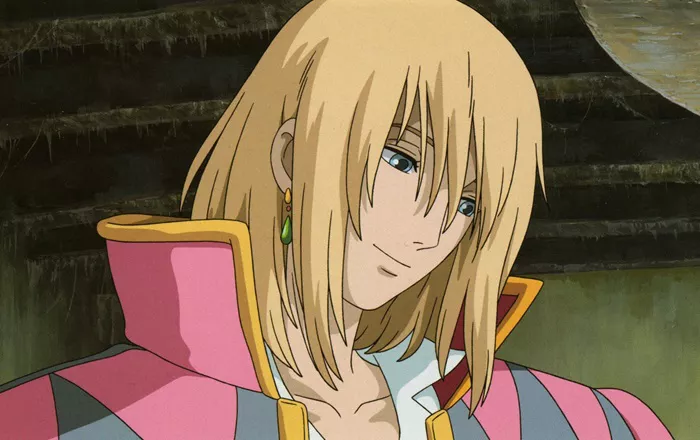Hayao Miyazaki’s “Howl’s Moving Castle” presents viewers with a protagonist whose desire for beauty is central to his character development. Howl, a powerful and enigmatic wizard, is portrayed as someone deeply concerned with his appearance. This article explores the reasons why Howl wants to be beautiful, examining both personal and thematic elements within the narrative.
Howl’s Character
The Mysterious Wizard
Howl is introduced as a wizard who lives in a fantastical moving castle, traversing landscapes with the aid of his magical prowess. Despite his formidable abilities, Howl’s character is depicted as complex and multifaceted, hiding vulnerabilities beneath a facade of charm and confidence.
Themes of Identity and Self-Perception
Miyazaki’s storytelling often delves into themes of identity and self-discovery. Howl’s preoccupation with beauty serves as a vehicle for exploring these themes, reflecting broader societal and personal struggles.
Beauty as a Reflection of Identity
The Influence of the Witch of the Waste
Early in the film, Howl’s encounters with the Witch of the Waste set the stage for his fixation on appearance. The witch’s curse threatens Howl’s youthful appearance, leading him to seek out magical remedies and maintain his external beauty at all costs.
Insecurity and Fear of Aging
Underlying Howl’s pursuit of beauty is a deep-seated fear of losing his youthful appearance. This fear drives his actions and decisions, shaping his relationships and interactions with others, including Sophie, the protagonist of the film.
The Dichotomy of Howl’s Persona
Charm versus Vulnerability
Howl’s charm and charisma mask inner vulnerabilities and insecurities. His desire to project an image of beauty and invincibility contrasts sharply with moments of self-doubt and introspection, revealing a more fragile side to his character.
The Mask of Confidence
Throughout “Howl’s Moving Castle,” Howl oscillates between projecting confidence and revealing moments of vulnerability. His external beauty serves as a shield against deeper emotional turmoil, highlighting the complexity of his character.
See Also: One Piece Season Two: Netflix Casting Call Reveals New Character Miss Goldenweek
Beauty as a Form of Escapism
Escaping the Realities of War
Set against the backdrop of a war-torn world, Howl’s pursuit of beauty can be interpreted as a form of escapism. Beauty offers solace from the harsh realities of conflict and loss, allowing Howl to retreat into a world of magic and illusion.
The Illusion of Control
For Howl, beauty represents a semblance of control in an unpredictable world. By maintaining his appearance, he seeks to exert power over his surroundings and defy the inevitability of change, particularly in times of uncertainty.
Relationships and Emotional Depth
Sophie and Howl’s Dynamic
Sophie, the protagonist transformed into an elderly woman by a curse, forms a pivotal relationship with Howl. Their interactions explore themes of acceptance and inner beauty, challenging Howl’s superficial ideals and prompting personal growth.
Growth through Vulnerability
As Howl’s relationship with Sophie evolves, he learns to confront his fears and insecurities. Sophie’s acceptance of his true self, beyond external appearances, fosters emotional growth and self-awareness in Howl.
Beauty as a Reflection of Inner Turmoil
The Conflict within Howl
Beneath the surface of Howl’s charming exterior lies a tumultuous inner conflict. His pursuit of beauty mirrors deeper struggles with identity, morality, and the consequences of wielding immense magical power.
Symbolism of the Starry Sky
Miyazaki employs visual symbolism, such as the starry sky within Howl’s magical realm, to convey themes of beauty and transcendence. The starry sky represents Howl’s aspirations and inner turmoil, serving as a metaphor for his journey towards self-acceptance.
Cultural and Philosophical Implications
Miyazaki’s Commentary on Beauty
Hayao Miyazaki’s portrayal of Howl’s desire for beauty invites reflection on societal perceptions of attractiveness and the impact of beauty standards on individuals. Howl’s quest for external perfection resonates with universal themes of vanity and self-image.
Beauty as a Moral Allegory
Beyond personal introspection, Howl’s pursuit of beauty can be interpreted as a moral allegory. Miyazaki critiques societal obsession with appearances, urging viewers to look beyond superficiality and embrace inner virtues.
Conclusion: Beauty and Beyond
The Evolution of Howl’s Character
Throughout “Howl’s Moving Castle,” Howl’s journey from superficiality to self-discovery underscores the film’s thematic depth. His initial fixation on beauty gives way to a deeper understanding of identity, love, and empathy.
Lessons from Howl’s Story
Miyazaki’s narrative challenges viewers to reconsider the significance of beauty and its role in shaping personal identity. Howl’s transformation reflects a broader narrative arc of acceptance and growth, emphasizing the importance of inner beauty and authenticity.
Final Thoughts
Hayao Miyazaki’s “Howl’s Moving Castle” presents a nuanced exploration of beauty through the character of Howl. His desire for external perfection serves as a lens through which deeper themes of identity, vulnerability, and societal critique are examined. By delving into Howl’s motivations and complexities, viewers gain insight into the profound philosophical and emotional underpinnings of Miyazaki’s storytelling.

